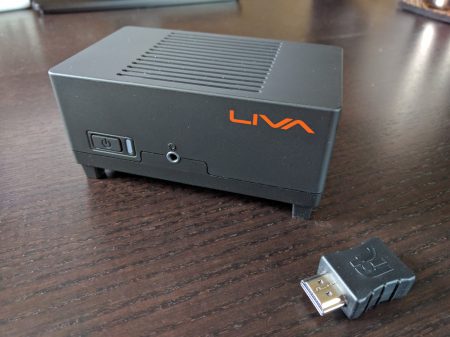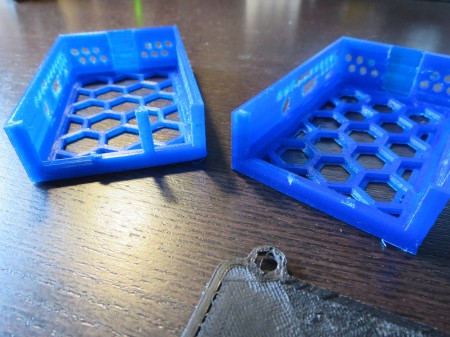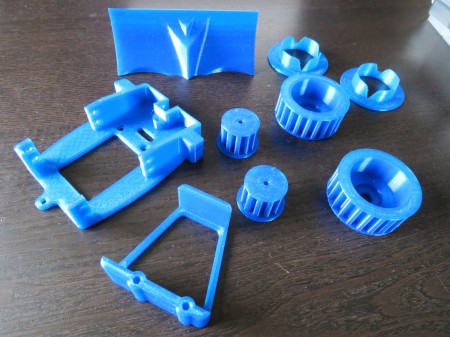Setting up the LIVA Mini PC (BayTrail Atom) as a Headless Server with Ubuntu Xenial 16.04
A while back I had picked up a neat little fanless Intel Atom computer based on the BayTrail N2807 CPU. It’s a dual-core system running at 1.6 GHz and has 2 GB of RAM and onboard flash disk, and seemed ideal as a micro server for my home LAN.
The device turned out to be a bit flaky to set up, so I thought I’d share my installation notes here. There are multiple revisions of this mini PC, and I believe I have one of the first versions. The case looks like this:
First, I created a USB flash drive with the Ubuntu 16.04 server install image using Ubuntu’s Startup Disk Creator app. Then, plug in an HDMI monitor and wired keyboard to the Liva. Hit F7 when the BIOS screen comes up and select the flash drive to start the installer.
The main issue I ran into was during the disk partitioning step. If I chose one of the guided partitioning options, the process wouldn’t complete, and raised an error about “Identical mount points for two file systems” on the flash storage.
After several unsuccessful attempts to try other options, I found a solution that worked. First, choose manual partitioning mode. Select the entire disk, and create a new partition table. Then select the free space and have it create partitions automatically. At this point I could save these changes and have the installer proceed past the partitioning step.
Everything else in the installer is pretty straightforward. Once I had everything set up the way I wanted, I disconnected the monitor and keyboard and intended to use the system as a headless server. However, the system refused to boot without a monitor attached. I tried several modifications to my GRUB bootloader command line to try to work around this, but had no luck. If someone knows the customization to make here, please let me know and I’ll update this post with the info.
Instead, I chose the lazy option. You can buy “dummy” HDMI connectors that emulate a monitor – for example here’s one that you can use.
Once I connected that to my Liva Mini PC, it was able to boot up headless and the device is now usable to me again.
I hope this information might be useful to others trying to make use of this handy mini PC system.



